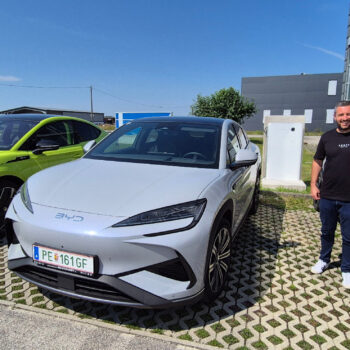
Research work in the field of bidirectional e-charging stations
- Posted by Neo Messtechnik
- On 15. July 2025
- 0 Comments
- Bidirectional Charging- Technical Feasibility, Scalability
Evaluation and demonstration of energy-economic and technical potentials of bidirectional charging
Project Description
Initial Situation and Problem: Both the expansion of photovoltaic systems and the number of electric vehicles are steadily increasing. More and more people are using electric vehicles for both private and professional purposes, and more and more electric cars are on the road, but they spend most of their time in garages and carports, in public commuter parking lots, or in company parking lots. The possibility of bidirectional charging and discharging (and thus using the electric car as an electricity storage device) offers great opportunities here. This not only reduces or eliminates the undesirable effects of electromobility, but – if used correctly – also creates additional grid- and system-friendly benefits for our energy system, from which everyone – whether private individuals, companies, or municipalities – can benefit. The projects and Car2Flex have proven the technical feasibility of bidirectional charging and demonstrated its positive effects in prototypes. However, turnkey, applicable solutions are still lacking, as is public awareness and acceptance.
Objectives and Methods: To address these challenges and thus tap into the enormous potential, the planned project pursues the following objectives:
1. Demonstration of technical feasibility, practical suitability, and scalability: To this end, the project will test three to five selected, commercially available bidirectional charging stations at highly visible and highly frequented test locations for more than six months using different management strategies.
2. Development of user- and application-oriented system solutions: To this end, user- and application-oriented concepts and solutions for the optimal future use of bidirectional charging infrastructure will be developed in co-creation workshops with various stakeholders such as companies and their employees, interest groups, and private individuals. This joint development should lead to high acceptance of the developed solutions.
3. Increase awareness and acceptance: In order to make electromobility, and especially bidirectional charging, more accessible and understandable to people, a bidirectional charging station will be deployed at highly frequented events in addition to the planned test sites lasting several months. This will demonstrate the potential of bidirectional charging in a comprehensible and understandable way using visualization. The focus here is on rural regions, where individual transport will continue to play a major role in the future.
4. Analysis and evaluation of the individual and systemic impacts of the developed solutions and business models, as well as their contribution to SDGs, using a combination of experimental and qualitative empirical methods.
Expected results:
- Analysis of the technical, economic, sustainable, and societal potential of bidirectional charging solutions.
- Tested, turnkey, and applicable system solutions for bidirectional charging.
- Scalable, user- and application-oriented business models with high acceptance among companies and the public.
- Recommendations for action for decision-makers and authorities, taking the Sustainable Development Goals into account.





0 Comments